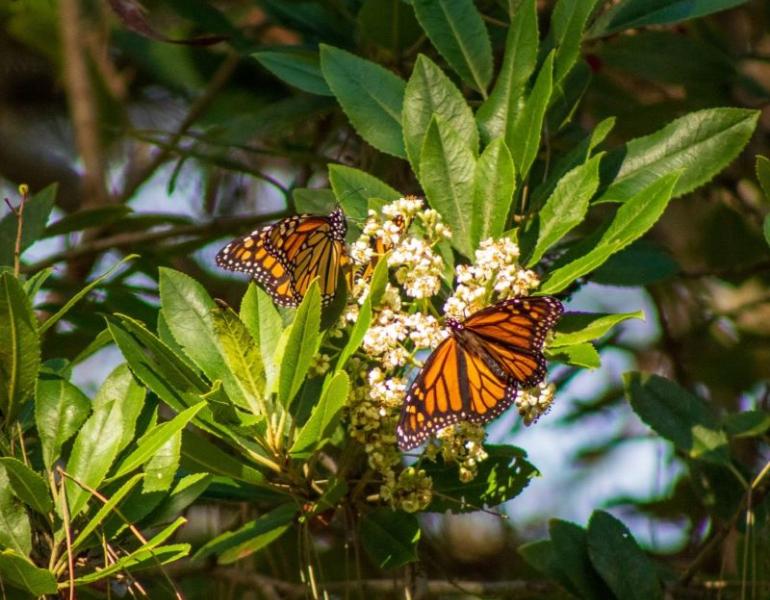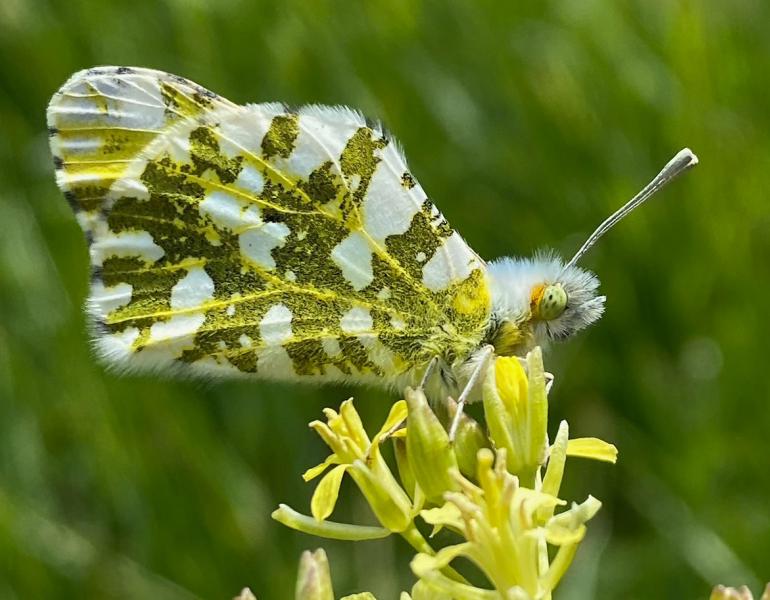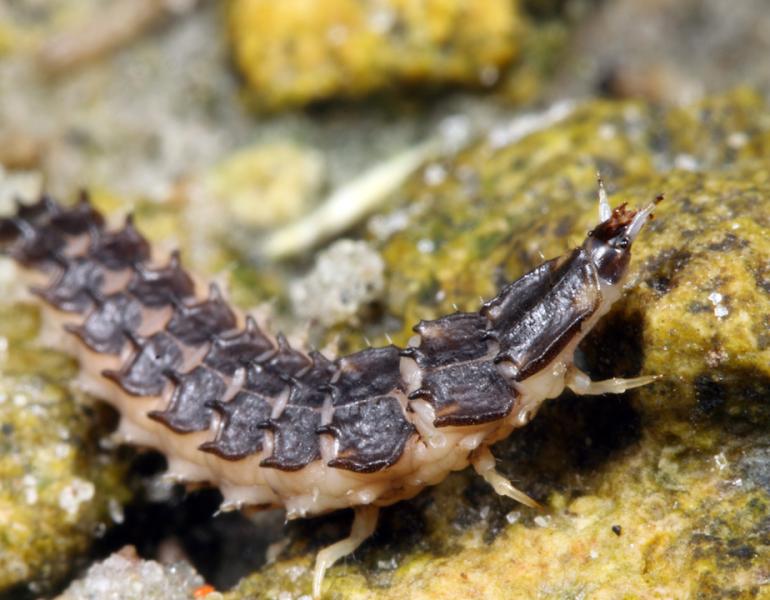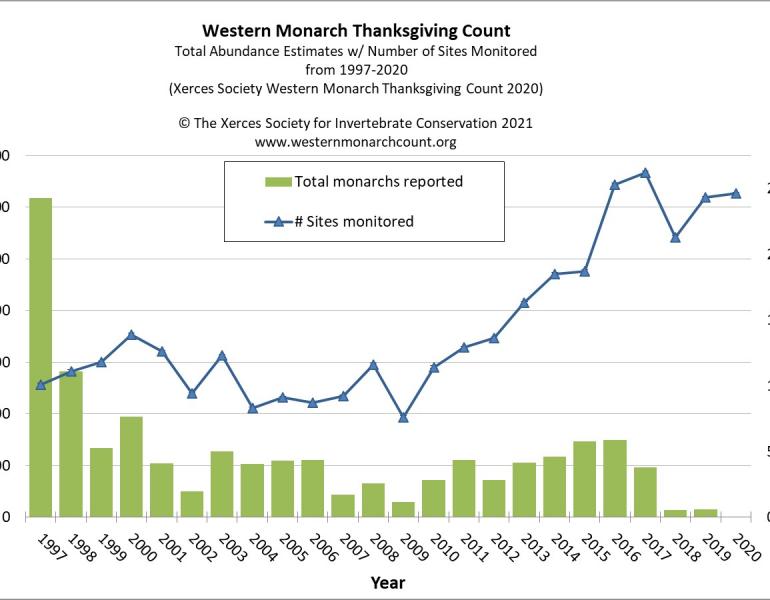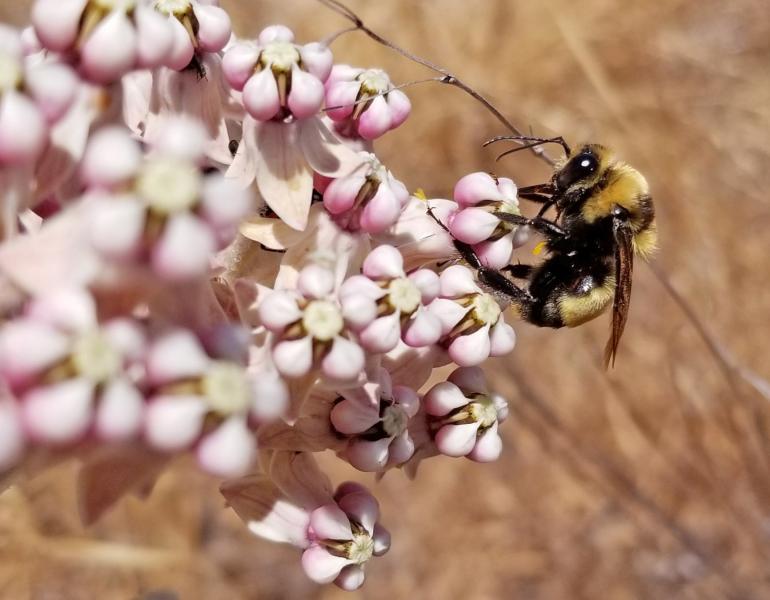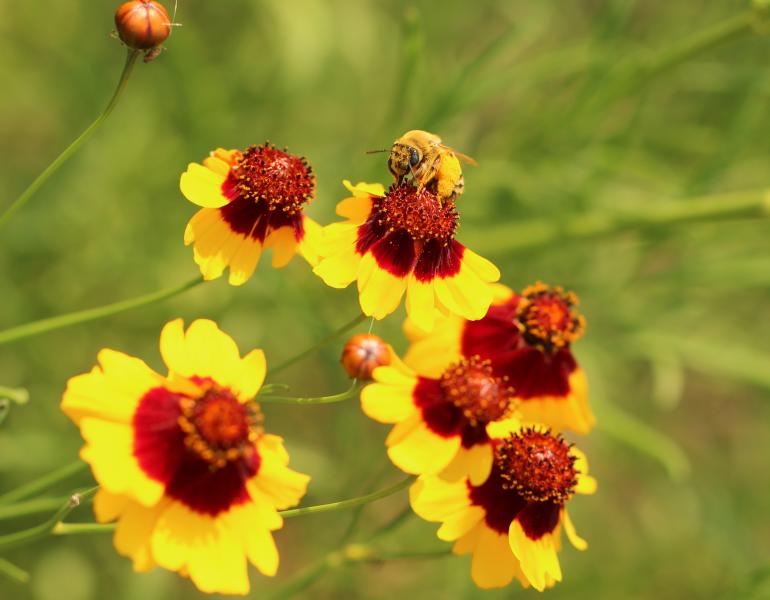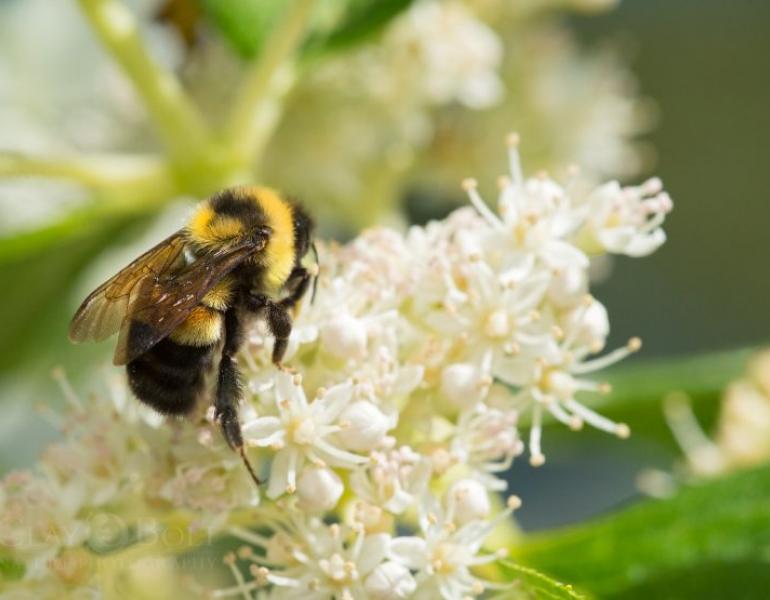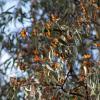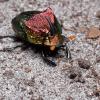The U.S. Fish and Wildlife Service has proposed to list the monarch butterfly as a threatened species under the U.S. Endangered Species Act, as announced today in the advance Federal Register. Here's why and what this means for people and monarchs.
Endangered Species Act
50 Years of Invertebrate Conservation Under the Endangered Species Act
Over the last 50 years, the Endangered Species Act has enabled federal protection of invertebrates.
Xerces Society Files ESA Petition to Protect Morrison Bumble Bee
Xerces Society has submitted a petition to list Morrison bumble bee under the federal Endangered Species Act.
The Xerces Society has Submitted a Petition for the Listing of the Large Marble Butterfly Under the Federal Endangered Species Act
Despite its widespread distribution, recent studies using long term monitoring data have ranked the large marble as one of the western butterfly species most at risk of extinction in the next 50 years.
ESA Petition Filed to Protect Southern Arizona’s Southwest Spring Firefly
The Xerces Society and New Mexico BioPark Society have submitted a petition for the listing of the Southwest spring firefly (Bicellonycha wickershamorum) as an endangered species under the federal Endangered Species Act (ESA).
ESA Petition filed to protect the Florida intertidal firefly (Micronaspis floridana)
The Florida intertidal firefly is a habitat specialist found only in the mangroves and salt marshes of coastal Florida and the Bahamas. Xerces has submitted a petition to list the beetle under the Endangered Species Act.
ESA Petition Filed to Protect the Loopy Five Firefly, a Southeastern Lightning Bug
The loopy five is a rare firefly currently known from fewer than ten wetland sites in middle elevations of Tennessee, South Carolina, and Georgia. The Xerces Society has submitted a federal petition to list this firefly under the Endangered Species Act.
Western Monarch Population Closer to Extinction as the Wait Continues for Monarchs’ Protection Under the Endangered Species Act
During the 24th Western Monarch Thanksgiving Count, nearly 100 volunteers carefully surveyed groves of trees on the California and Northern Baja coast for monarch butterflies. Despite the challenges of conducting field work during a pandemic, volunteers surveyed 246 sites, three more than last year. Unfortunately, to the surprise and dismay of many, only 1,914 monarchs were counted at all the sites. This is a shocking 99.9% decline since the 1980s.
Court Decision Undermines the State of California’s Ability to Protect Insects Under its Endangered Species Act
The Superior Court of Sacramento County recently sided with agricultural groups and determined that the State of California does not have the legal authority to protect insects under the California Endangered Species Act, effectively excluding a huge proportion of animal diversity from a law that was enacted to broadly protect the state’s wildlife.
U.S. Fish & Wildlife Service Fails to Designate Critical Habitat for the Rusty Patched Bumble Bee
The U.S. Fish & Wildlife Service decided to not designate critical habitat for the rusty patched bumble bee, despite its previous finding that habitat loss threatens the bee. Failing to designate critical habitat may hinder recovery of the rusty patched bumble bee, which has already been lost from more than three quarters of its historic range.
Working from the (river) bottom up to conserve the western ridged mussel
The western ridged mussel is one of just a few species of freshwater mussels native to North America west of the Continental Divide. This mussel can live for many decades in our rivers and streams, and is the only living member of its genus, making it unique among North America’s freshwater mussel fauna. Sadly, the western ridged mussel has declined over much of its range and faces numerous threats where it still occurs, bringing it to the point where it is at risk of extinction.
Insects Lose as Trump Administration Weakens the Endangered Species Act
These new regulations will make it much harder to protect and recover the animals that are struggling to survive and need our help the most.
Taking a Stand for Firefly Species Facing Extinction
The Xerces Society and the Center for Biological Diversity have submitted a joint petition for the emergency listing of the Bethany Beach firefly (Photuris bethaniensis) under the federal Endangered Species Act (ESA).
Pollinator Conservation Program Digest – January 2019
January’s featured staff have been working on establishing pollinator habitat in California’s Central Valley and helping farmers both navigate the ins and outs of the Endangered Species Act and provide restored habitat for native bees in Maine.
Pollinators and the 2018 Farm Bill
Although we did not get everything we wanted in the 2018 Farm Bill, pollinators are still a priority and formal commitments to support conservation efforts are now in effect for at least the next five years.
The Endangered Species Act Needs Your Help!
The Endangered Species Act is our nation’s most effective law for protecting animals and plants in danger of extinction, and it has prevented 99% of listed species from going extinct. We need your voice to help defend this crucial law.
Rusty Patched Bumble Bee Deserves Protection, Not Delay
On February 10, 2017, the rusty patched bumble bee was slated to receive the federal protection it so clearly deserves. Unfortunately, the Executive Order signed by the president on Inauguration Day freezing all new regulations while the new administration reviews “questions of fact, law, and policy” has unnecessarily delayed the implementation of this rule.
Rusty Patched Bumble Bee: The First Bee in the Continental U.S. to be Protected Under the Endangered Species Act
This news comes after more than a decade of work by the Xerces Society and our partners: Scientists, farmers and land managers, filmmakers, advocates, and community members who all care about native bees and their plight.

